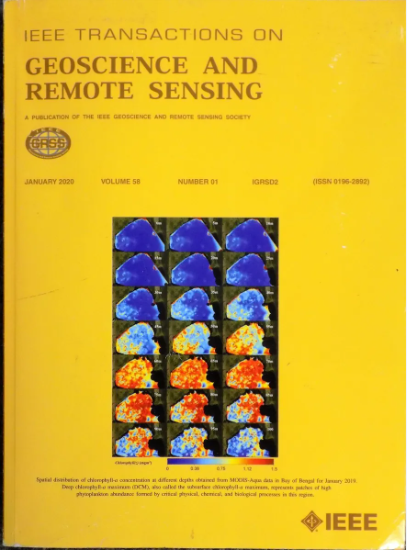An Approach to Semantic Segmentation of Radar Sounder Data Based on Unsupervised Random Walks and User-Guided Label Propagation
IF 7.5
1区 地球科学
Q1 ENGINEERING, ELECTRICAL & ELECTRONIC
IEEE Transactions on Geoscience and Remote Sensing
Pub Date : 2024-09-11
DOI:10.1109/TGRS.2024.3458188
引用次数: 0
Abstract
Radar sounders (RSs) are utilized for the analysis of subsurface of Earth and other planets. Data acquired from RS can be processed to obtain radargrams, which are 2-D arrays containing the backscattered echo power received by the radar after sending pulses toward the surface. The study of radargrams offers crucial insights for the geological interpretation of the history of planets and for the monitoring of ice layers in glacial regions. Deep learning (DL) has emerged as a powerful tool for the automatic feature extraction and analysis of radargrams; yet, they are still treated as conventional images. We propose a novel methodology for the semantic segmentation of RS data based on a two-step approach. The rationale of this methodology is exploiting the spatial horizontal correlation that exists among radargram features, which is an important property that distinguishes these data from standard images. In the first step, an encoder is trained in an unsupervised way, exploiting random walks to learn meaningful representations of sequential features within radargrams. In the second step, few reference labeled samples allows the model to propagate the labels to the full radargram. We also introduce a metric to quantify the degree of horizontal correlation among features, and we use it to find the grounding zone in coastal radargrams of polar areas. We test our methodology on two datasets obtained by the multichannel coherent radar depth sounder (MCoRDS) RS and a dataset from the orbital RS shallow radar (SHARAD) and we discuss the very promising results.基于无监督随机漫步和用户引导标签传播的雷达探测数据语义分割方法
雷达探空仪(RS)用于分析地球和其他行星的地表下层。从雷达探空仪获取的数据经过处理后可以得到雷达图,雷达图是二维阵列,包含雷达向地表发送脉冲后接收到的后向散射回波功率。雷达图的研究为行星历史的地质解释和冰川地区冰层的监测提供了重要的见解。深度学习(DL)已成为雷达图自动特征提取和分析的强大工具;然而,雷达图仍被视为传统图像。我们提出了一种基于两步法的 RS 数据语义分割新方法。这种方法的基本原理是利用雷达图特征之间存在的空间水平相关性,这是这些数据区别于标准图像的一个重要特性。第一步,以无监督方式训练编码器,利用随机漫步学习雷达图中有意义的序列特征表示。在第二步中,通过少量的参考标注样本,模型可以将标注传播到完整的雷达图中。我们还引入了一个指标来量化特征之间的水平相关程度,并用它来寻找极地沿海雷达图中的接地带。我们用多通道相干雷达测深仪(MCoRDS)RS 获得的两个数据集和轨道 RS 浅层雷达(SHARAD)获得的一个数据集测试了我们的方法,并讨论了非常有前途的结果。
本文章由计算机程序翻译,如有差异,请以英文原文为准。
求助全文
约1分钟内获得全文
求助全文
来源期刊

IEEE Transactions on Geoscience and Remote Sensing
工程技术-地球化学与地球物理
CiteScore
11.50
自引率
28.00%
发文量
1912
审稿时长
4.0 months
期刊介绍:
IEEE Transactions on Geoscience and Remote Sensing (TGRS) is a monthly publication that focuses on the theory, concepts, and techniques of science and engineering as applied to sensing the land, oceans, atmosphere, and space; and the processing, interpretation, and dissemination of this information.
 求助内容:
求助内容: 应助结果提醒方式:
应助结果提醒方式:


